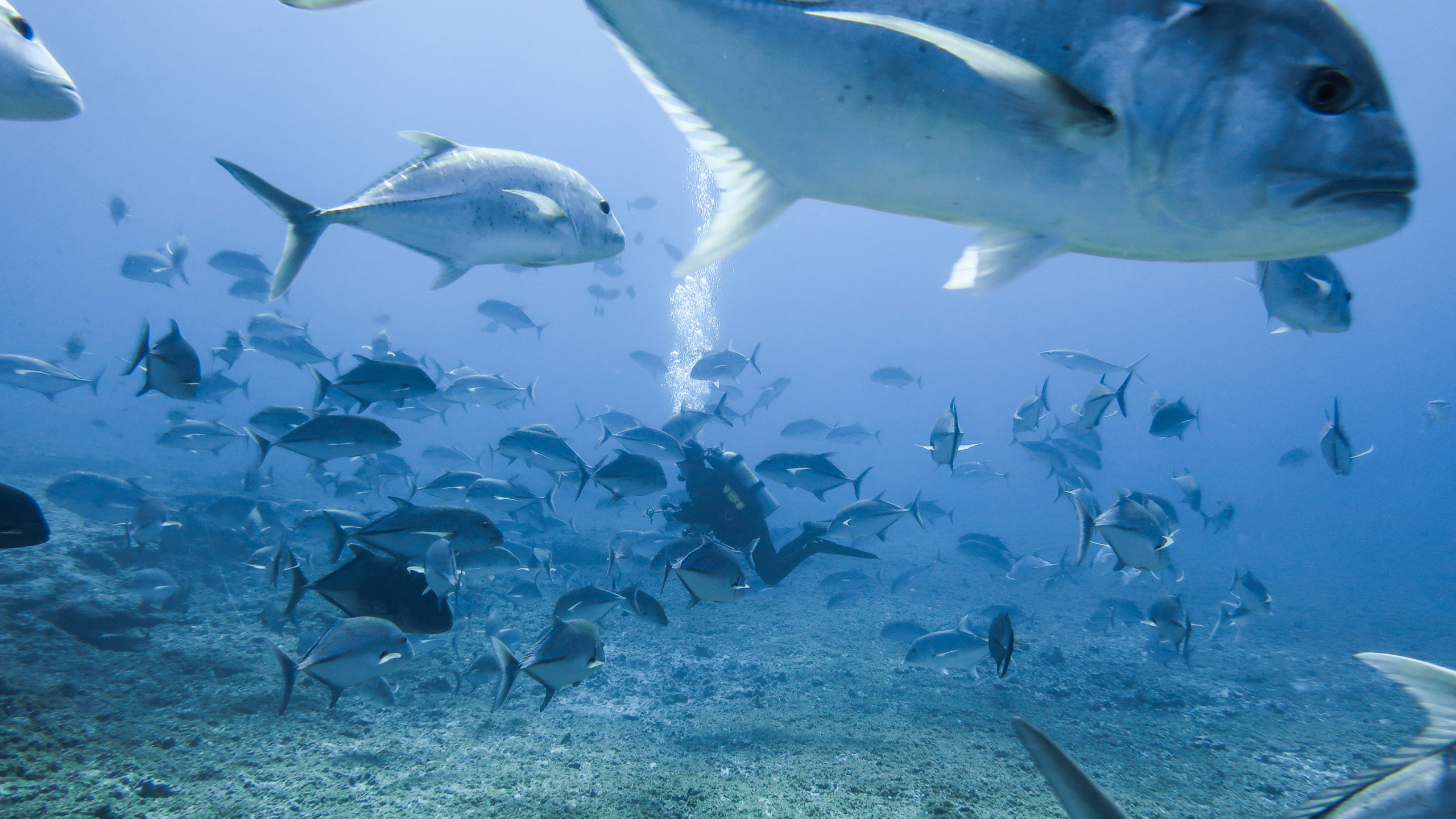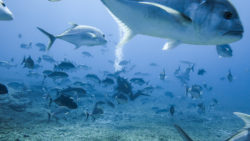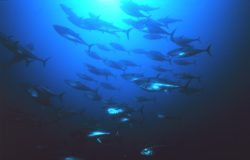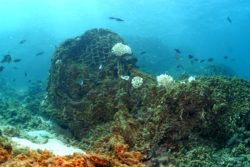
Everything You Need to Know About Illegal Fishing
Most people are unaware that illegal, unreported, and unregulated (IUU) fishing is a problem throughout the world’s ocean. In fact, international fisheries management agencies report that one-fifth of the world’s catch is illegal, unreported or unregulated. Not only is this a threat to individual fish stocks, but entire fisheries and ecosystems. But what exactly is IUU fishing and why is it such a problem?

School of jacks. Photo: Andrew Gray/NOAA
Defining IUU
Fisheries are areas in the ocean where fish are caught for recreational or commercial purposes. Most fisheries are regulated by some kind of government authority, whether through permitting or some other mechanism. These management strategies help to prevent overfishing and ensure the future of economically and commercially important fish populations.
Illegal fishing includes fishing activities against applicable laws and regulations, whether at the regional, national, or international level depending on where the fishing takes place. Examples of illegal fishing include doing so without a license, taking fish that are too small, taking fish from another country’s jurisdiction, fishing in areas closed to fishing such as seasonal spawning sites, using illegal gear, or taking more fish than is legally permitted.
Unreported fishing includes fishing activities that are misreported or not reported at all to the relevant enforcement authorities. Both misreporting and not reporting of catch data, which might include the number, species, or size of fish caught, is a problem because it leads to inaccurate measurements of fish stocks or their ecosystems.
Unregulated fishing is fishing that takes place in areas where there are no relevant conservation or management plans in place. Examples would be fishing that occurs on the high seas, which are international waters that fall between jurisdictions and belong to no one. The high seas cover nearly 45 percent of our planet and is where most illegal fishing occurs.

Bluefin tuna in Greater Farallones National Marine Sanctuary. Photo: NOAA
The Effects of IUU
Illegal fishing activity and vessels that do not accurately report their catch lead to inaccurate stock estimates and predictions of the future status of fisheries throughout the ocean. In addition to ecological problems, IUU fishing creates negative economic outcomes. IUU activities harm legitimate commercial fishing by flooding the market with cheap products — priced low because they were caught while avoiding the costs of permitting and other regulatory requirements — and creating unfair competition in the marketplace. The economic cost of IUU is difficult to quantify but the World Wildlife Fund estimates a cost that can total as much as $36.4 billion annually. Forced labor is also common in IUU fishing fleets, which often include violations of human rights and support organized crime.
More than most other practices, IUU fishing is a key driver of overfishing throughout the ocean. This is because IUU fleets will take more than the allowed limit of fish from a fishery, use prohibited gear that damage habitats and unintentionally catch other species in large numbers, and target fish species that are not legal to fish due to their population status. IUU fishing threatens the health of the global ocean and limits the availability of wild-caught fish now and well into the future. Nearly half of the world’s population relies on fish as a vital source of protein in their diet, which makes proper fisheries management so important. IUU fishing threatens food security for people all over the world.

Fishing net caught on a reef in Papahānaumokuākea Marine National Monument. Photo: James Watt/NOAA
What Can You Do?
With knowledge of the global challenge that is IUU fishing, experts in fisheries management have spent years developing policies and tools to help combat and minimize these practices. As a result of their efforts, there are now simple actions we can take no matter where we live or travel that can help us support legal and ethical fishing practices and avoid seafood products that are caught illegally or are not reported.
The first is to buy seafood that is certified sustainable by looking for labels like the Marine Stewardship Council’s blue ecolabel in stores and on restaurant menus. This label is only granted to commercial fishing companies that undergo an audit of their processes to verify the fish they sell are caught legally, sustainably, and can be traced by anyone.
The second is to use consumer guides like NOAA’s FishWatch and Monterey Bay Aquarium’s Seafood Watch when selecting seafood. These tools are designed for consumers to help them understand where seafood in their region comes from and which species are the most ocean-friendly.
The third is to refer to the Seafood Nutrition Partnership’s Seafood Toolkit, funded by the Foundation, to help guide you to make responsible and sustainable seafood choices.
